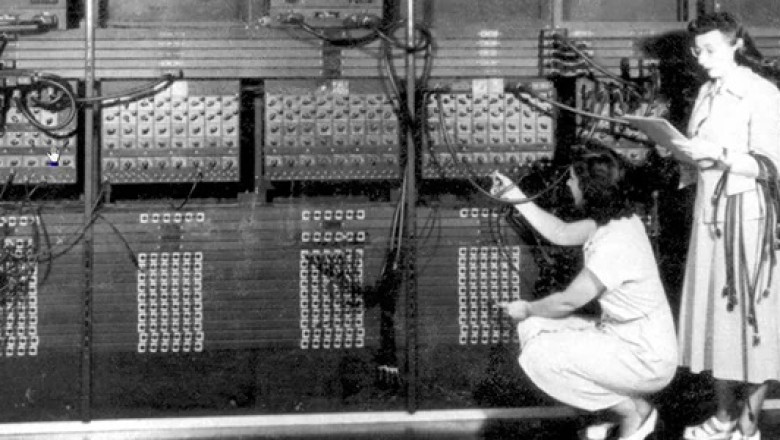
views
It's utterly infuriating how the monumental contributions of women in the field of computing have been continuously overlooked and underappreciated. The names Gloria Gordon Bolotsky and Ester Gerston should resonate with the same reverence as any other pioneering figures in technology. In 1946, these remarkable women were working on the ENIAC machine, the very first general-purpose electronic digital computer. Yet, history has often relegated their stories to footnotes, failing to celebrate their groundbreaking achievements with the recognition they so richly deserve.
Gloria Gordon Bolotsky and Ester Gerston, along with their colleagues, were instrumental in developing what is now considered the bedrock of modern computing. The ENIAC machine, or Electronic Numerical Integrator and Computer, was a behemoth that occupied an entire room, comprising 18,000 vacuum tubes and weighing around 30 tons. But beyond its physical enormity, ENIAC represented a colossal leap in computational capability. These women were not merely assistants or clerks; they were mathematicians and programmers who broke new ground in an entirely new discipline.
Their role involved programming the ENIAC, which required a deep understanding of both the hardware and the mathematics behind the computations. This was no small feat. The programming was done using plugboards and switches—a complex and painstaking process that demanded both precision and creativity. Their work laid the foundation for the software development processes that drive our technology today. However, their contributions have been largely overshadowed by their male counterparts, who were often credited as the primary inventors and engineers of the project.
The erasure of these women's contributions is not just a slight against their personal legacies; it is a profound injustice to the field of computing itself. It perpetuates a false narrative that excludes the vital contributions of women and distorts the true history of technological advancement. Gloria Gordon Bolotsky and Ester Gerston were trailblazers, pioneers who ventured into uncharted territory with determination and brilliance. They deserve to be celebrated not as exceptions but as integral figures in the annals of computing history.
This historical oversight speaks to a broader issue of gender bias in science and technology. Women's achievements have often been minimized, their roles downplayed, their stories untold. It's high time we rectify this by acknowledging and honoring the women who have shaped our technological landscape. By doing so, we can inspire future generations of women to pursue careers in STEM fields, knowing that their contributions will be valued and remembered.
While it is easy to get angry about this injustice, let us channel that anger into positive action. We must advocate for a more inclusive and accurate portrayal of history, one that recognizes the contributions of all individuals, regardless of gender. Educational curricula should highlight the stories of Gloria Gordon Bolotsky, Ester Gerston, and other unsung heroines of computing. Museums and institutions should ensure their exhibits reflect the diversity of those who have shaped our technological world.
The story of Gloria Gordon Bolotsky and Ester Gerston working on the ENIAC machine in 1946 is a testament to human ingenuity and perseverance. It's a story that should inspire awe and admiration, not be buried in obscurity. These women were not just working on a machine; they were crafting the future, laying down the building blocks for the digital age we live in today. Their contributions have had a lasting impact, shaping the course of technological progress in ways that are still felt.
In honoring their legacy, we must strive to create a world where the contributions of women in science and technology are celebrated and remembered. It is through their stories that we can build a more inclusive and equitable future, one where every individual's achievements are recognized and valued. So let us remember Gloria Gordon Bolotsky and Ester Gerston not just as names from the past, but as pioneers who helped forge the path to our digital future. Let their story be a beacon of inspiration, illuminating the way for generations to come.





















Comments
0 comment